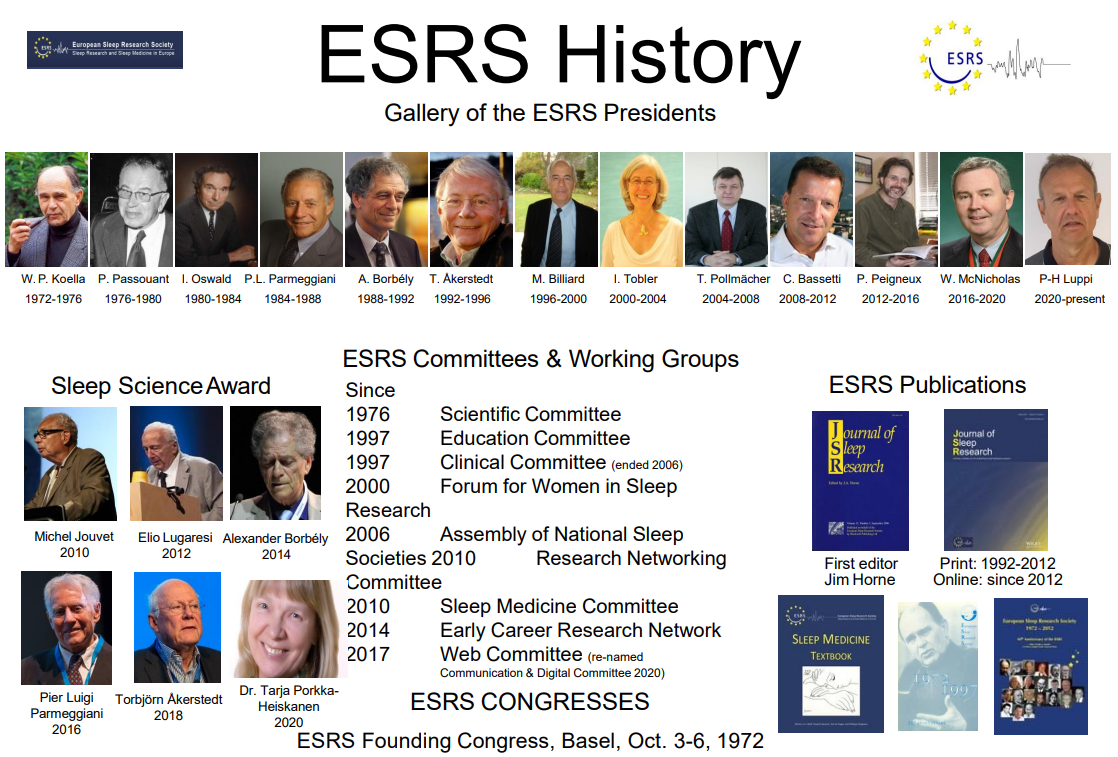Sleep Science Friday: Sleep Medicine Textbook 2nd Ed.
6 August 2021
It has been 7 years since the first edition of the European Sleep Research Society (ESRS) Textbook on Sleep Medicine was published in 2014. Fast forward to August 2021, when 1000 copies of the 2nd Edition of the Sleep Medicine Textbook have finally touched down at the ESRS head office in Regensburg, Germany!
We are so thrilled to get our hands on the physical copy, and even more excited to bring our first digital version of the textbook to life. Each one comes with a unique code to access the digital content.
About the Sleep Medicine Textbook
The Sleep Medicine Textbook 2nd Ed. is a state of the art, significantly expanded, comprehensive publication, structured around the Revised Sleep Medicine Catalogue of Knowledge and Skills. The textbook is comprised of 15 sections, 92 chapters and over 1100 pages written by experts in the field. It provides a European approach to sleep medicine education, and primarily represents the knowledge base for the ESRS-endorsed sleep medicine examinations. However, all practitioners in sleep medicine and science are encouraged to order the textbook and adopt it for additional teaching needs.
The Table of Content and Preface provides a more in-depth look at the material that is covered in the textbook. And as you’ll see, it covers the entire range of clinical specialties. This was a new approach to address the growing interest of practitioners of those specialties in sleep and sleep related disorders.
We’d like to thank the 150+ contributors, including the Editors and Section Editors, Authors and Co-Authors and ESRS Board and Staff, who have worked tediously over the past year to make the textbook a reality.
Chief Editor Prof. Dr. Tiina Paunio shares a few words on what we can expect from the textbook.
Later on we’ll hear from the other editors Prof. Dr. Claudio Bassetti, Prof. Dr. Walter McNicholas and Prof. Dr. Philippe Peigneux as well.
Curious about the contents?
There are two sample chapters available that you can already get a head start on reading:
- Chapter A.10. Circadian Biology / Chronobiology
- Chapter K.1. Cardiovascular Diseases
Authors’ Book Chapter Reviews
Additionally, several authors were generous enough to share an introduction to their specific chapters of the textbook with us.
Chapter C.2. Pathophysiology of Insomnia – Prof. Dr. Kai Spiegelhalder
Chapter G.6 Miscellaneous Topics on Parasomnias – Dr. Dulce Neutel
Chapter M.8. Neuromuscular Disorders – Dr. Matthias Boentert
We’d like to thank them for taking the time to not only write these chapters, but also to record these introductions for us.
And finally, Brigitte Knobl – ESRS Editorial Manager also shares some insight on the editorial process that has led to this moment.
It is our hope that you enjoy reading the textbook, whether in preparation for the upcoming sleep medicine exam or simply to update your knowledge.
When you receive your copy, please feel free to reach out to us with any feedback you might have or even to share a picture of your new textbook.
ESRS Announcements
Sleep Europe 2022 Call for Symposia
We’d like to invite all members to contribute to the program by proposing a symposium by 27 September 2021. Find out more on the criteria and procedures here. Submissions will be accepted starting next week.
Recent publications from ESRS members:
- Krone et al. (2021). A role for the cortex in sleep-wake regulation. Nat Neurosci.
- Şenel et al. (2021). Changes in sleep structure and sleep spindles are associated with the neuropsychiatric profile in paradoxical insomnia. Int J Psychophysiol.
- Tarokh & Vyazovskiy (2021). Too sleepy for school: is sleep in teenagers homeostatically regulated under chronic sleep restriction? Sleep.
- Oksenberg et al. (2021). How sleepy patients differ from non-sleepy patients in mild obstructive sleep apnea? J Sleep Res.
- Zhang et al. (2021). The Challenges and Pitfalls of Detecting Sleep Hypopnea Using a Wearable Optical Sensor: Comparative Study. J Med Internet Res.
- Theiler et al. (2021). Sleep behavior of infants with infantile hemangioma treated with propranolol-a cohort study. Eur J Pediatr.
- Weibel et al. (2021). Regular Caffeine Intake Delays REM Sleep Promotion and Attenuates Sleep Quality in Healthy Men. J Biol Rhythms.
- Hülsemann & Rasch (2021). Embodiment of sleep-related words: Evidence from event-related potentials. Psychophysiology.
- Betta et al. (2021). Cortical and subcortical hemodynamic changes during sleep slow waves in human light sleep. Neuroimage.
- Cosgrave et al. (2021). Revisiting nocturnal heart rate and heart rate variability in insomnia: A polysomnography-based comparison of young self-reported good and poor sleepers. J Sleep Res.
- Boof et al. (2021). Effect of the novel dual orexin receptor antagonist daridorexant on night-time respiratory function and sleep in patients with moderate chronic obstructive pulmonary disease. J Sleep Res.
- Saxvig et al. (2021). Sleep in older adolescents. Results from a large cross-sectional, population-based study. J Sleep Res.
- Plamberger et al. (2021). Impact of menstrual cycle phase and oral contraceptives on sleep and overnight memory consolidation. J Sleep Res.
- Anujuo et al. (2021). Association between Depressed Mood and Sleep Duration among Various Ethnic Groups—The Helius Study. Int. J. Environ. Res. Public Health.
Just published an article? Want your research to be featured? Saw something interesting? Contact us at esrs@esrs.eu.




